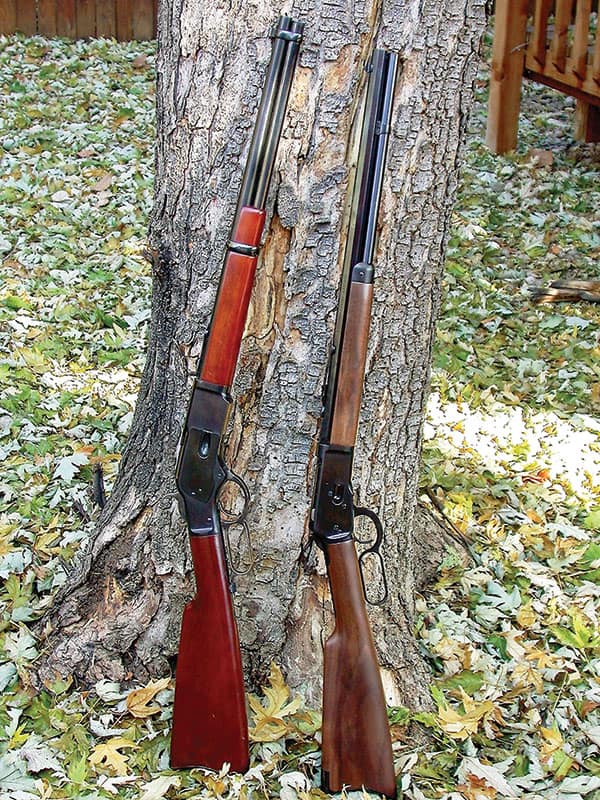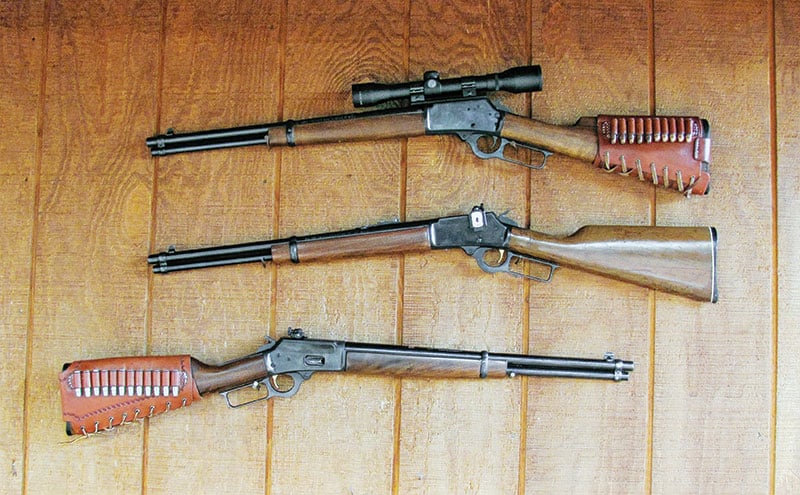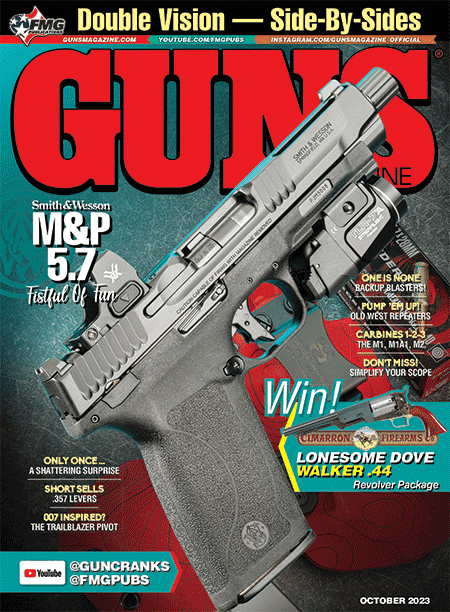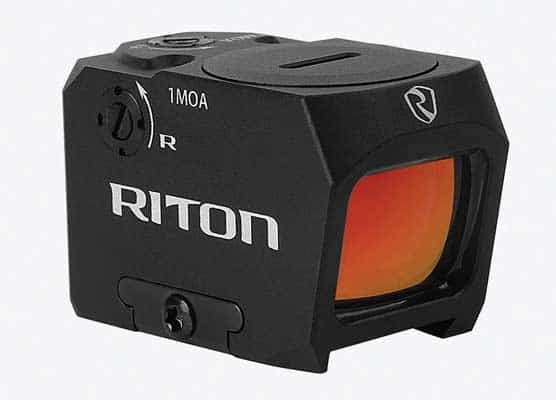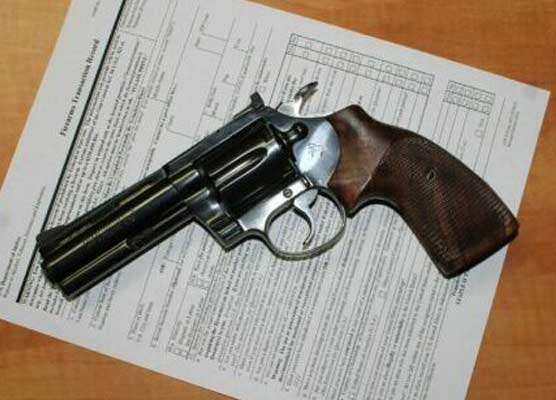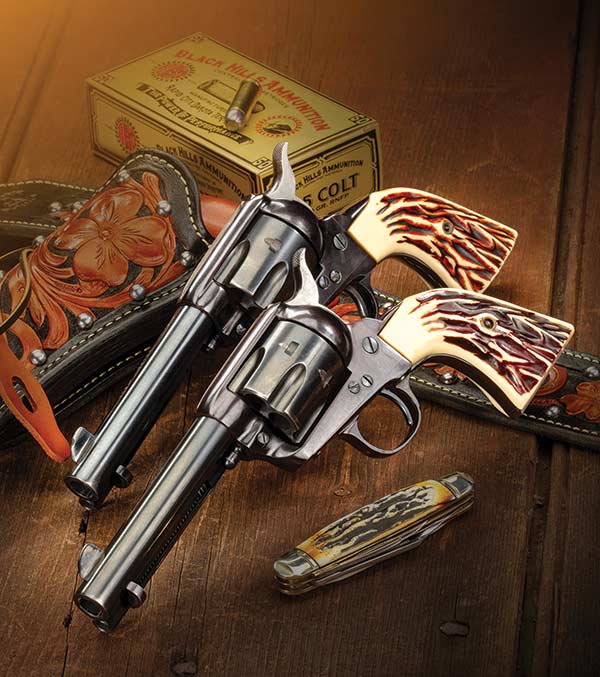The .357 Magnum Lever Gun
Don't Sell It Short
Beginning in 1860, history records a real change in personal sidearms. This was the year Oliver Winchester’s factory issued the first really workable lever-action carbine, the 1860 Henry. Henry was Winchester’s factory foreman and Winchester was not quite yet ready to put his name on such a radical idea.
This changed six years later when the first official Winchester levergun, the 1866 Winchester, arrived. The 1866 was the 1860 Henry improved with the King’s Patent loading gate on the right side of the receiver along with the addition of a wooden forearm. Both of these leverguns were chambered in .44 Rimfire. Three years later, the Smith & Wesson American revolver arrived and in addition to the original .44 American Centerfire, it was soon chambered in .44 Rimfire allowing the use of the same cartridge in rifle and sixgun.
Progress
The next major improvement was the Model 1873 Winchester, which had a removable side plate, and most importantly, was now chambered in .44 WCF (Winchester Centerfire) or as it is mostly known today, .44-40. It was also subsequently chambered in .38-40 and .32-20 and Colt soon chambered their Single Action in the same three cartridges. Now enter John Browning. He greatly improved the pistol-cartridge-chambered levergun with the introduction of the Model 1892. It was chambered in the same three cartridges as the 1873. However, its rear locking bolt was much stronger than the toggle link of the ’73. It was about this same time a major switch was made from black powder cartridges to smokeless powder.
The Winchester Model 1892 was, and is, just about the slickest-handling lever action carbine ever. The .44-40 in the Model 1892 does not need to take a backseat to the .44 Magnum that came along much later. I wrote the following 20 years ago in my book, Action Shooting Cowboy Style: “Ringo had one. Rooster had one, Big Jake had one, John Barnard Books had one. Every Western character created by John Wayne had a couple of things.”
First came the ever-present faux-ivory handled Colt Single Action Army and second, only to the Duke’s Colt, was his levergun, a Model 1892 Winchester. Who could ever forget the scene in Stagecoach when John Wayne as Ringo twirls his ’92 Winchester to stop the stage? Perhaps the greatest scene ever in any Western is when Rooster Cogburn with a Colt Single Action Army in his left hand and a freshly twirled Winchester in his right, yells “Fill your hand, you #!@*&%!” and prepares to meet the Ned Pepper gang single-handedly.
Arrival
Meanwhile, in 1935 the .357 Magnum arrived. You would think Winchester would chamber the Model 1892 for this first Magnum cartridge but they did not. It remained for custom gunsmiths such as Ward Koozer of Arizona to convert Model 1892s chambered for the .32-20 to .357 Magnum. One of those early conversions appeared in this very magazine in the early 1950s written up by Kent Bellah, one of my all-time favorite gun writers. The modern era of easy-handling magnum lever actions had arrived.
What Winchester did not do, Marlin did in 1979 with their 18 ½” Model 1894C chambered in .357 Magnum. I purchased one of the very early ones and it didn’t take me long to realize if I can only have one centerfire rifle, it would be this Marlin .357 Magnum.
Winchester followed in the 1980s with the 1894 Trapper chambered in .357 Magnum. Original Trappers from both Marlin and Winchester were offered in barrel lengths of 12″ and 14″. However, today’s Trappers are required to be no shorter than 16″. No, I absolutely cannot explain the logic of this. With the 16″ barrel, the .357 Magnum Trapper has a magazine capacity of nine rounds. Winchester later offered a Trails End version with a longer barrel and a magazine capacity of 11 rounds.
Later, Winchester Model 1892s made by Miroku in Japan were offered in .357 Magnum. These are exceptionally well-made lever guns. Replica Winchester Model 1873s were also available from Navy Arms, offering a beautifully tailored version with fancy walnut stocks, blued finish and mouthwatering case-hardened receiver. They also shoot very well.
Two other Model 1892s of note are made in Japan and South America. In 1979, Browning brought the Model 1892 back to life with a run of Japanese-made lever guns in .357 Magnum and .44 Magnum. These were beautifully made with a forearm and butt stock of nicely finished French walnut with a curved butt plate. They are long gone out of production now, but they can be found at gun shows sporadically. One of the smarter things I have done in my shooting life was to acquire both a .357 and a .44 Magnum Browning B-92. Both have 20″ barrels, slick actions and hold 10 rounds.
The latest .357 Magnum lever action rifles is the Henry Big Boy, an all American-made rifle. Henry has a well-deserved reputation for accuracy and nicely finished and fitted rifles, and this .357 Magnum is no exception. It is also heavier than the other versions, which can be a big plus for anyone who’s recoil shy.
Making A Choice
In today’s modern world, with so many rifle options available in a myriad of calibers, is the .357 Magnum levergun really good for anything? No, it is not good for anything. In fact, just the opposite: It is good for about everything. It is an excellent choice for hunting varmints and deer-sized critters at close range. No, I would not choose it for elephants or Alaskan brown bear; however, neither one of these have been seen in my area for years. There is much talk these days about house rifles or self-defense rifles and usually the first choice offered is an AR, now offered in everything from the .223 up to the .450.
For myself, I’d much rather have a .357 Magnum lever action rifle with the ability to handle everything from full house .357 Magnum loads down to .38 Special loads specifically designed for self-defense.
I have been shooting .357 Magnum leverguns for 40 years, which gives me considerable experience. One thing I have learned is, while these rifles will shoot well with hard-cast, gas-checked bullets as well as a long list of jacketed bullets, trying to build a powerful load with plain-base cast bullets is an exercise in futility. They will work with lighter loads; however, the accuracy goes South very quickly if we try to push them too fast.
I have had excellent accuracy with standard .38 Special loads, an example being the Black Hills 158-grain Lead Flat Point, which clocks out just under 1,000 feet per second in a 20″ Rossi and places three shots in 1″ at 50 yards. My cast bullet .38 Specials using the Oregon Trail 158 RNFP have a velocity of 1,050 fps and also shoot just as well. However, trying to push them too fast changes everything and accuracy disappears.
Some of my favorite loads for the Marlin include the Lyman #358156GC over 16.0 grains of #2400 for a muzzle velocity of over 1,900 fps while placing three shots in less than one inch — huge at 50 yards shooting with a 4x scope in place. This is not a load to be taken lightly! The 180-grain SWCGC bullet over 13 grains of W296 results in a muzzle velocity just under 1,500 fps and a one-hole group at the same distance.
Did I hear someone say let’s go hunt feral pigs? Switching to jacketed bullets, the Hornady 158 XTP-JHP over 18.0 grains of Li’l Gun places three shots in less than 1″ and a muzzle velocity just over 1,800 fps. The Speer 158 JFP with 15.5 grains of #2400 exhibits the same accuracy at a muzzle velocity of 1,750 fps. There is not much I need to do with a rifle that cannot be handled with these loads.
